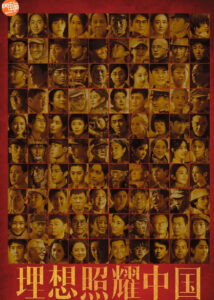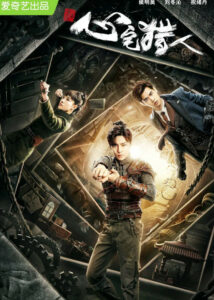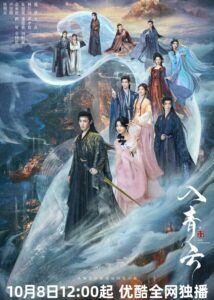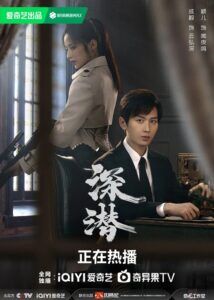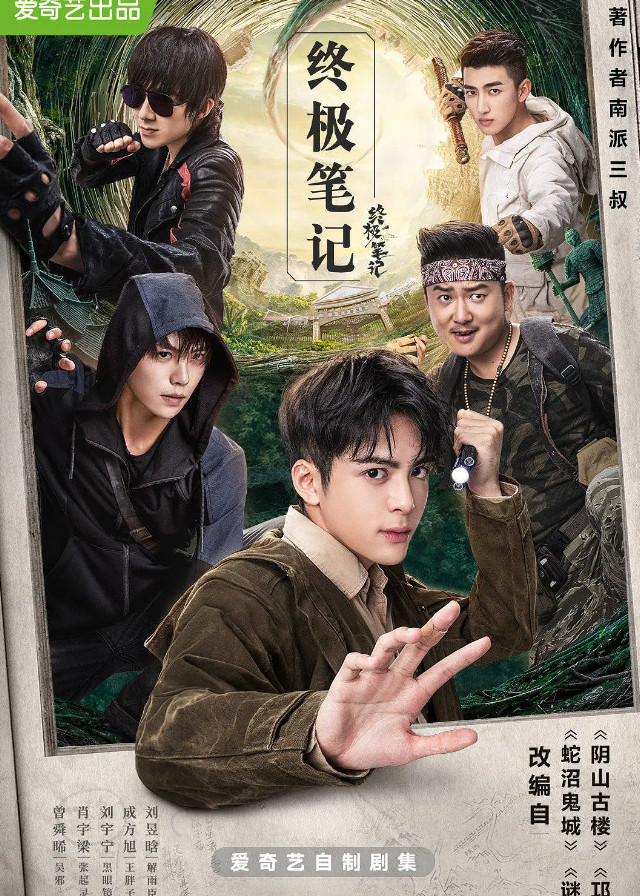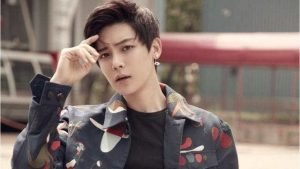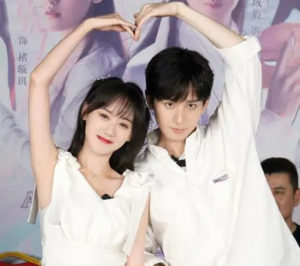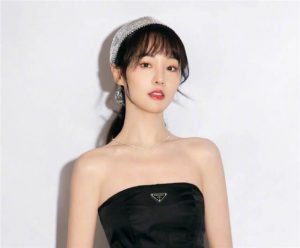The Lost Tomb 2 : Explore with the Note Episode 3 Recap
> The Lost Tomb 2 : Explore with the Note Recap
Zhang Qiling revealed that he had been to this place before, but he couldn't recall the details due to amnesia, stating that his name should be on the list of archaeologists. Wang Pangzi expressed skepticism, pointing out that the archaeology team was formed decades ago, which would make Zhang Qiling similar in age to Wu Xie's Uncle San Xing. Zhang Qiling also wanted to understand the reason behind this.
When Wu Xie asked about his memories of the underwater tomb, Zhang Qiling recounted past events. He recalled that he, Wu Sansheng, and others had ventured into the underwater tomb. During that expedition, a team member named Xie Lianhuan had gone missing. Later, his body was discovered on a rock.
As the body could not be preserved at sea, one person was tasked with taking it back to shore for the funeral, while the rest of the team stayed behind with their gear and food to continue exploring the tomb. They encountered a sea monkey as they entered the tomb. Inside, a strong, pleasant fragrance permeated the air, making everyone feel remarkably comfortable.
When Wu Xie asked what happened next, Zhang Qiling stated that he remembered nothing after smelling the pervasive aroma. Wang Pangzi interjected, suggesting they were likely hypnotized by the Bone Scent of the Forbidden Maiden. This reminded Wu Xie that Uncle San Xing had once warned him to stay away from the Forbidden Maiden's Bone Scent, as even a whiff could induce a death-like sleep.
Uncle San Xing had recounted how everyone in the tomb fell asleep, and when he awoke, he found himself alone, with all their belongings gone, except for a single coffin. Suddenly, a hand reached out from the coffin to grab him. He struggled free and swam with all his might back to shore, where he was rescued by a passing fishing boat. Uncle San Xing also told young Wu Xie not to follow his dangerous path.
Wu Xie wondered if his uncle's story referred to this very sea. As they discussed their current predicament, Wu Xie connected their situation to an "elevator" concept, inspired by Wang Pangzi's analogy of a moving stage. He theorized that their side chamber moved up and down, suggesting there might be identical chambers above or below it. This mechanism would explain why their oxygen cylinders were missing when they returned to what they thought was the same spot.
Wang Pangzi proposed waiting in the passage for the chamber to shift back so they could retrieve their oxygen tanks. However, Zhang Qiling pointed out a flaw in Wu Xie's Uncle San Xing's story: if Uncle San Xing had merely fallen asleep "inside" the side chamber and not exited into the passage, its movement shouldn't have changed his location. Wu Xie was concerned about the unpredictable cycle of the chamber's movement.
With oxygen levels dwindling, the trio decided to wait in the passage for the chamber to reset and retrieve their oxygen cylinders. They soon found themselves in a symmetrical side chamber containing an impressively grand coffin made of Phoebe Zhennan wood. Zhang Qiling believed this was the same coffin Uncle San Xing had seen upon waking. While Wang Pangzi admired its magnificence, Wu Xie noticed the peculiar feng shui of the tomb, describing the mechanisms and traps as mere "pranks."
Zhang Qiling, without hesitation, drew a small knife to pry open the coffin. Wang Pangzi, however, insisted on adhering to the old rules, which dictated lighting a candle before opening a coffin. As Wang Pangzi lit a candle, he spotted a cat's skeleton in a corner. Wu Xie cautioned them that the tomb's feng shui was reversed, meaning forbidden items were deliberately placed within.
Zhang Qiling then opened the coffin, revealing a grotesque female corpse with one head and twelve hands, emitting an unbearable stench. Zhang Qiling quickly discerned that it was a single, deformed human insect, not multiple bodies, due to the single head and the arrangement of the limbs. The coffin was filled with water, so Wang Pangzi and Wu Xie ventured into an adjacent room to find porcelain vessels to scoop it out.
In the adjacent room, Wu Xie became fascinated by the porcelain vessels, which depicted people working on a large construction project. He noted that the arrangement of the vases mirrored the construction's progress, but the architectural style was not from the Central Plain. When he turned to ask Wang Pangzi for his insights, he realized Wang Pangzi had already left.
Wu Xie, now alone and holding a porcelain vase, discovered that the door through which he entered had vanished, indicating another shift in the moving chambers. He tried to calm himself, rationalizing that the door moved frequently and would likely return. Meanwhile, Wang Pangzi and Zhang Qiling had successfully scooped the water out of the coffin and moved the female corpse onto the floor. They heard a cat's meow and realized the cat skeleton they had seen earlier was gone.
Noticing Wu Xie's prolonged absence, they checked the door and found it sealed. As they struggled to move the coffin, which was inexplicably heavy because it was glued to the base with rosin, they observed the female corpse's belly begin to pulsate. After finally shifting the coffin, they discovered a looter's tunnel underneath it. When they looked back at the female corpse, it suddenly extended a hand and grabbed Zhang Qiling's arm.
Wang Pangzi quickly fired his air gun at it, and both men immediately retreated into the looter's tunnel. Back in his chamber, a tense Wu Xie, trying to calm himself with calculations and the theory of relativity, saw a monster—likely the reanimated cat or a sea monkey—crawling towards him. Terrified, he scrambled into another side chamber. Just as he caught his breath, the monster's hand reached up from beneath and grabbed his foot.
Wu Xie quickly pulled out his knife and stabbed it, forcing the creature to release him. In this new chamber, which he identified as the left hall, Wu Xie discovered a coffin shaped like a bathtub. Recognizing this "basin coffin" as a style from the Warring States period, he began to doubt that this was indeed a Ming Dynasty tomb, as initially believed. He pondered the purpose of such a design and the vast amount of water channeled into this deep, elevator-like tomb.





